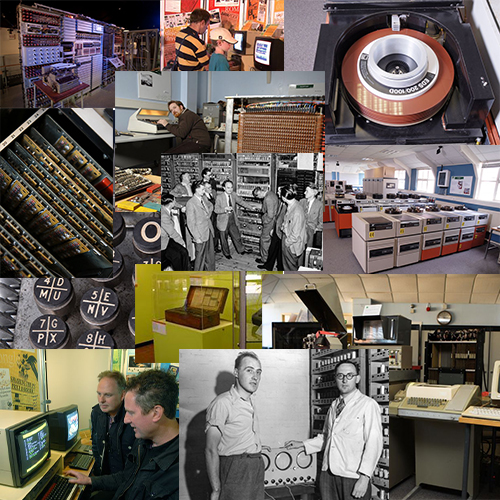This International Museum Day may be a good opportunity to consider some of the growing number of museums dedicated to preserving the history of computing.
In the UK:
The National Museum of Computing, located on Bletchley Park, is an independent charity housing the world’s largest collection of functional historic computers, including the rebuilt Colossus, the world’s first electronic computer, and the WITCH, the world’s oldest working digital computer. The museum enables visitors to follow the development of computing from the ultra-secret pioneering efforts of the 1940s through the large systems and mainframes of the 1950s, 60s and 70s, and the rise of personal computing in the 1980s and beyond. (Images above are from http://www.tnmoc.org/)
http://www.tnmoc.org/
The Centre for Computing History is based in Cambridge. It hosts hands-on exhibitions, educational workshops and a wide range of activities and events. Most importantly, it makes the history of personal computing relevant and fun for all ages!
The growth and innovation of the computing revolution has been fast and furious. Having created our global society, whereby our thinking, means of communication and the way we organise our lives have been irreversibly transformed, it is now impossible to envisage a world without computers or the Internet.
There is now a generation growing up who know very little about how this has all come to pass. The Centre for Computing History tells this story.
http://www.computinghistory.org.uk/
In Australia:
The Museum of Computing History at Monash University is an exciting visual exploration of computer technology and how it has changed our lives. The Museum aims to provide a visual display of computing history as well as establish a reference collection demonstrating the use of computing technology at the university.
https://www.monash.edu/it/about-us/museum-of-computing-history
In the US:
The Computer History Museum in California dates from 1968, and claims to house the largest and most significant collection of computing artifacts in the world. The mission of the Computer History Museum is to preserve and present for posterity the artifacts and stories of the Information Age.
http://www.computerhistory.org/
In Europe:
The Heinz Nixdorf MuseumsForum (HNF) in Paderborn, Germany, invites visitors to experience the history, present and future of information technology over 6,000 m² of floorspace, from the first written characters, via typewriters and calculating machines all the way to early computers and present-day robots. This museum is said to have the greatest number of items on exhibit of any computing museum.
http://www.hnf.de/en/home.html
